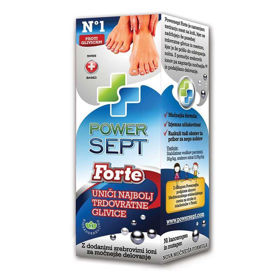Customer question:
What does cellulite look like? Anonymous customer's question
Pharmacist's answer:
Cellulitis is a superficial skin infection that usually affects the lower legs but can also appear on the face, hands, and other body areas. If left untreated, the infection can spread to the lymph nodes and bloodstream and become life-threatening. It is not usually spread from person to person.
Signs and symptoms may include:
- an irritated area of infected skin that also spreads
- skin dimples
- swelling
- pain
- heat
- fever
- fever
- spots
- blisters
What is the difference between cellulite and cellulitis?
Cellulite and cellulitis are two different diseases. It may sound similar, but it is essential to understand the differences between one condition that is quite common and usually harmless and one that is often a cause for concern. Cellulite is quite common, and many people have it - it is a lumpy or orange skin appearance, usually on the thighs, abdomen, or buttocks. The lumpy appearance is caused by fat cells that have grown between the connective tissue under the skin and between which water is trapped.
Cellulitis is a bacterial infection of the skin. It occurs when bacteria penetrate the skin after a cut, burn, wound, or bite. When bacteria get under the skin, they multiply there. When their concentration increases, the body's cells begin to fight the infection, which can cause inflammation of the infected skin. Cellulitis can appear anywhere on your legs and feet but can also attack your arms, torso, and face.
How do we treat cellulite?
Cellulitis is usually treated with antibiotics. You will usually receive five days of treatment, and your symptoms should start to improve after just a few days. Untreated cellulitis can lead to bacteremia, endocarditis, osteomyelitis, toxic shock syndrome, or sepsis. Rarely can the infection spread to a deep layer of tissue called the fascial lining.
To prevent cellulitis, take these precautions when you notice a skin wound:
- wash the wound with soap and water every day
- ask your doctor if applying a protective cream or ointment would help
- cover the wound with a bandage and change the bandage daily
- watch for signs of infection
Can cellulite be dangerous?
Cellulitis is an infection of the deeper layers of the skin and underlying tissue. It can be a severe condition if not treated immediately. The infection develops suddenly and can quickly spread throughout the body. Severe infections can spread deep into the body and can be life-threatening. Complications can include extensive tissue damage and tissue death (gangrene). The infection can also spread to the blood, bones, lymphatic, heart, or nervous systems.
What causes cellulite?
A bacterial infection usually causes cellulitis. The bacteria that cause it often live harmlessly on the skin but can cause an infection if they get into a break in your skin from bruises, cuts, scrapes, or animal bites. You are more likely to get cellulitis if you are recovering from surgery, have other health problems, or take medications that weaken your immune system or cause problems with blood circulation.
Interesting reading: Cellulitis legs












 Facebook
Facebook
 Instagram
Instagram
 info@moja-lekarna.com
info@moja-lekarna.com

